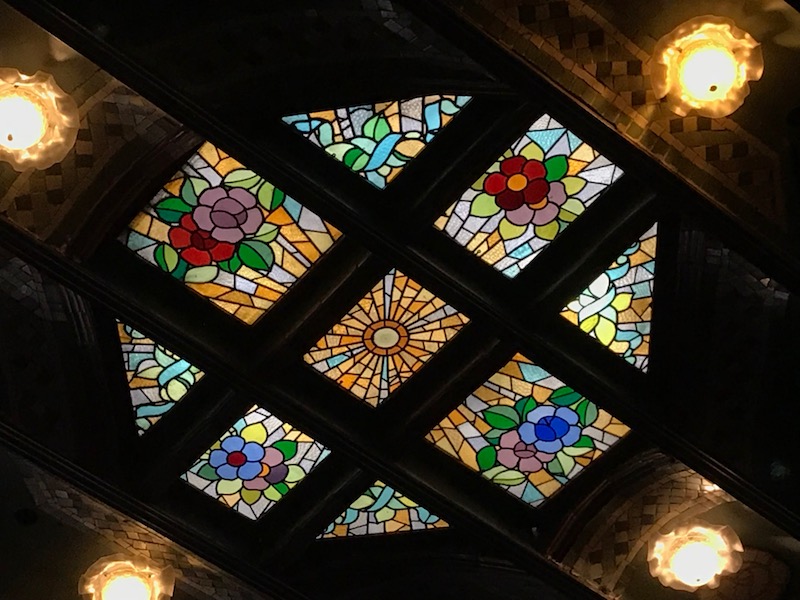Our Blog - Barcelona Day 5 - February 2018
Our last day for this trip and, unfortunately, it was cold and rainy. I wasn't feeling that great (caught a bit of a cold) and so I wasn't up for doing too much. We had wanted to go to the Palau de la Música Catalana and so we headed over there. Unfortunately, there was a concert starting at 10:30 and they told us that we could come back for a visit at 2. It was "free museum" Sunday, so then we walked over to the Picasso museum only to find that the "next available" entry was at 1:30 in the afternoon.
Scratch that one, so then we headed to the Barcelona History museum. While we didn't take any pictures there, it was an interesting museum. We weren't going to spend that much time there, so we didn't take an audioguide. About 50% of the displays were in English, so it wasn't too bad without the audioguide. This has an interesting bit of history ... in 1931, a late gothic palace from the 15th century was being moved in order to preserve it from being demolished to make was for a large road. While rebuilding it, some remains of the old Roman city of Barcino were found and the archaeological research that was done in the surrounding area found a whole quarter of the Roman city. The core of the museum centers on these Roman ruins in the basement. No pictures but if you are in Barcelona and you are interested in Roman ruins, this would be a good way to spend an hour or so.
Then a quick lunch at Taller Tapas (we had been to one of their locations on our first trip to Barcelona, and they always do really good Tapas so we found their nearest location). Then back to the Palau de la Música Catalana, which is a concert hall. It is another Catalan Moderniste building, where curves dominate over straight lines and the rich decorations emphasize nature with flowers and organic motifs. The rich decoration of the façade incorporates elements from many sources including traditional Spanish and Arabic architecture. The brick building is adorned with mosaics in various columns on the main and 1st floors as well as up near the top. The column mosaics are mainly just floral designs, but the one at the top is a large allegoric mosaic by Lluís Bru that represents the members of a choral society that was founded in 1891 (which you can't really see well from the ground). It is a bit hard to see, but above the balcony you can see three circles and above those are busts. These busts are those of Giovanni Pierluigi da Palestrina, Johann Sebastian Bach, and Ludwig van Beethoven.


One the corner is a massive sculpture group from Miguel Blay, symbolizing Catalan music as a graceful maid before a group of male and female figures.

Interior of the main lobby, which was packed with people going to the morning concert.


The small cafe at the back, which is where the tours start. Remember the roses that you see in the last picture .... I'll talk about them a bit later.




A renovation a bit ago enclosed the original side of the building under a wall of glass, which opens up a bit more space while still preserving the facade. Along side is another building that was added later, although it was meant to blend in, which we think it does nicely.



The Grand staircase is also highly decorated with marble balustrades supported by unusual transparent yellow glass balusters.

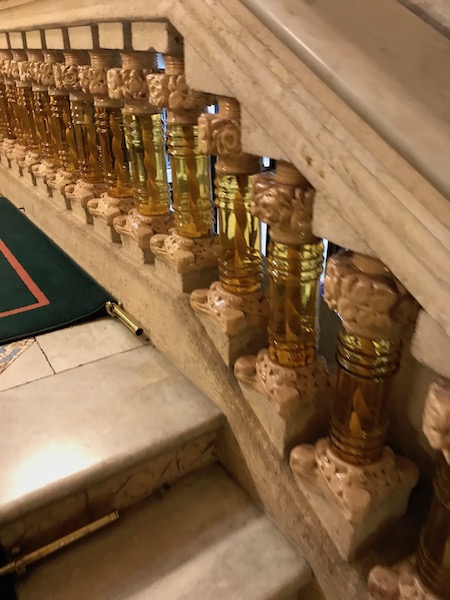
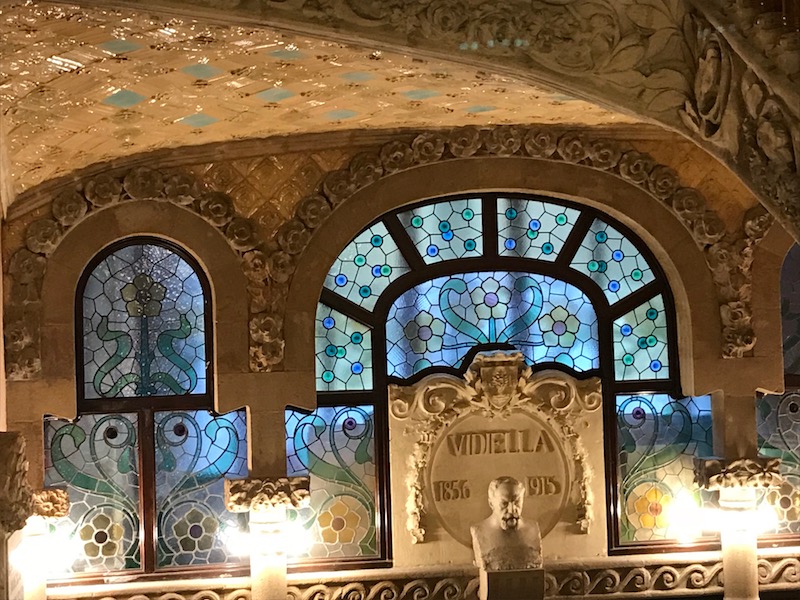

The Lluís Millet hall is on the second floor and is a popular gathering place for concert-goers. From floor to ceiling, the hall is two stories high and has several ornate mosaic columns. You can also go out on the balcony and from there, you can get close-up views of the two rows of columns outside its windows. You can also see here that the balcony balustrades also have transparent glass decor, these in green.

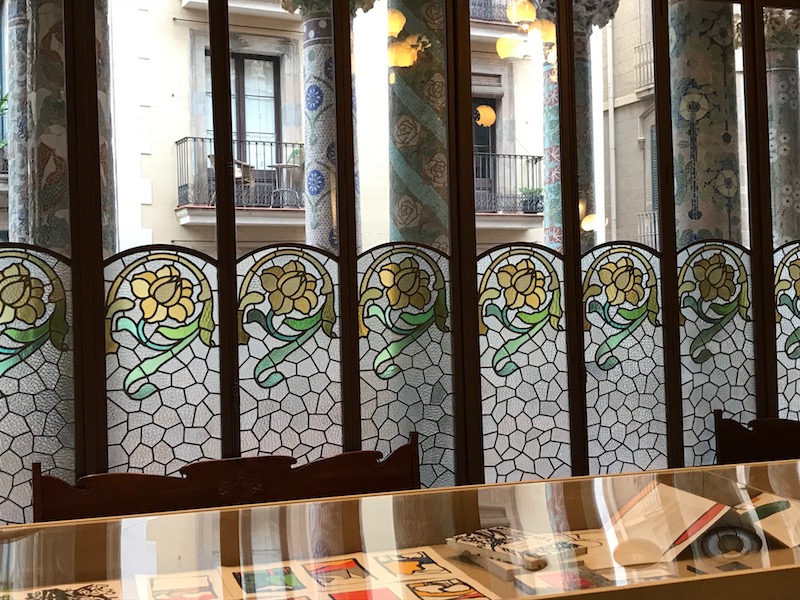



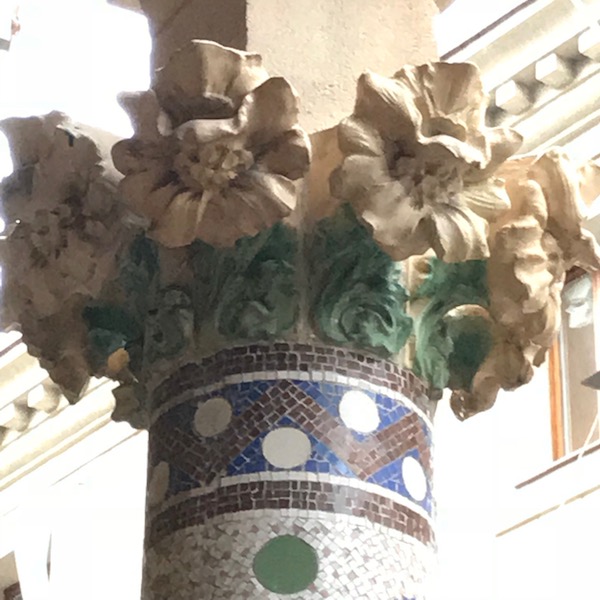


Heading up another floor to where we went into the concert hall.
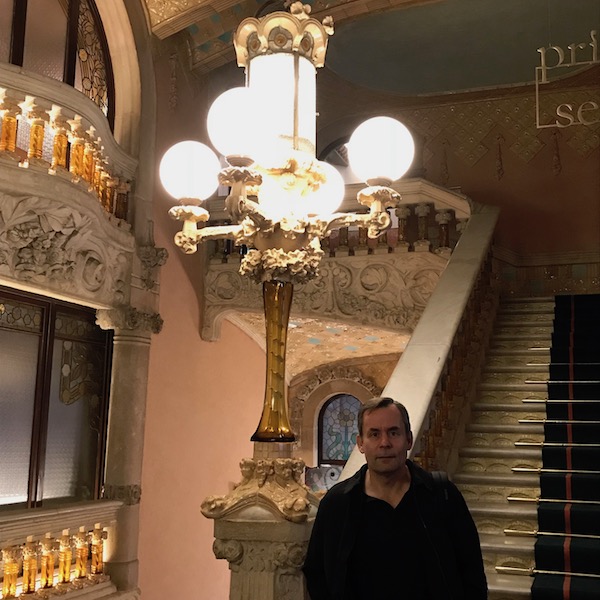

The main concert hall seats a bit over 2,000 people and is the only auditorium in Europe that is illuminated during daylight hours entirely by natural light (through the various windows on the sides and the large window in the ceiling (more detailed pictures later). I attempted to get multiple pictures of the various types of decoration that you can see around the sides and the ceiling.
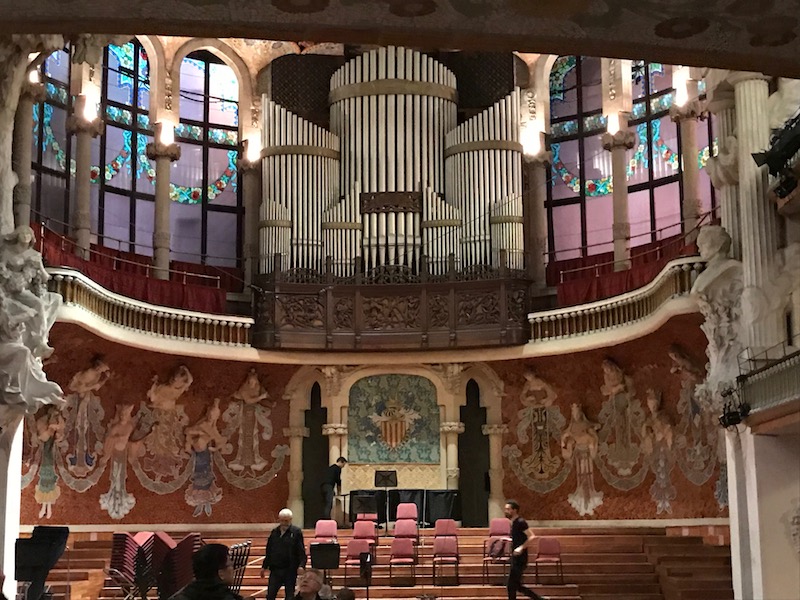




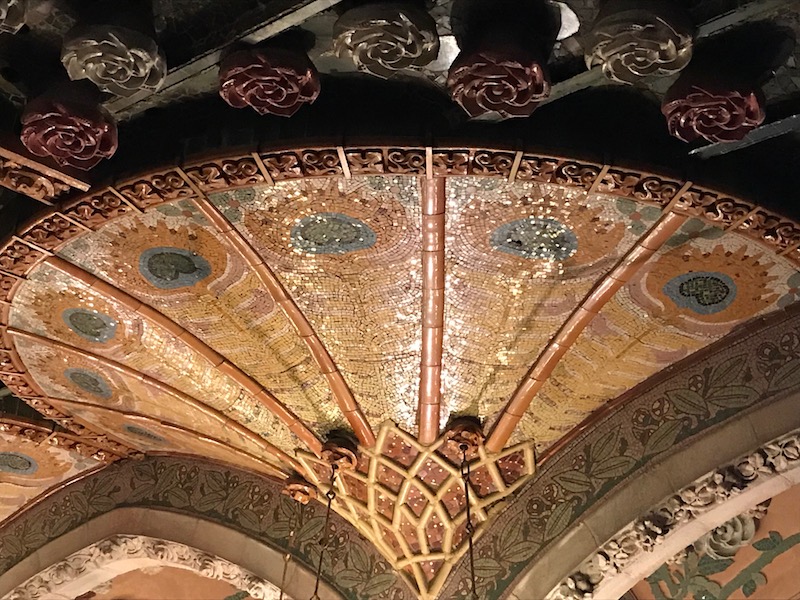



On the right-hand side of the ceiling next to the stage depicts the ride of the valkyries in Wagner's opera Die Walküre (The Valkyries). At the back are two sculptures of winged horses to honor Pegasus, the horse of Greek mythology that are the symbols of high-flying imagination. Pegasus was ridden by the muses when called by their father Zeus to be by his side on Mount Olympus.
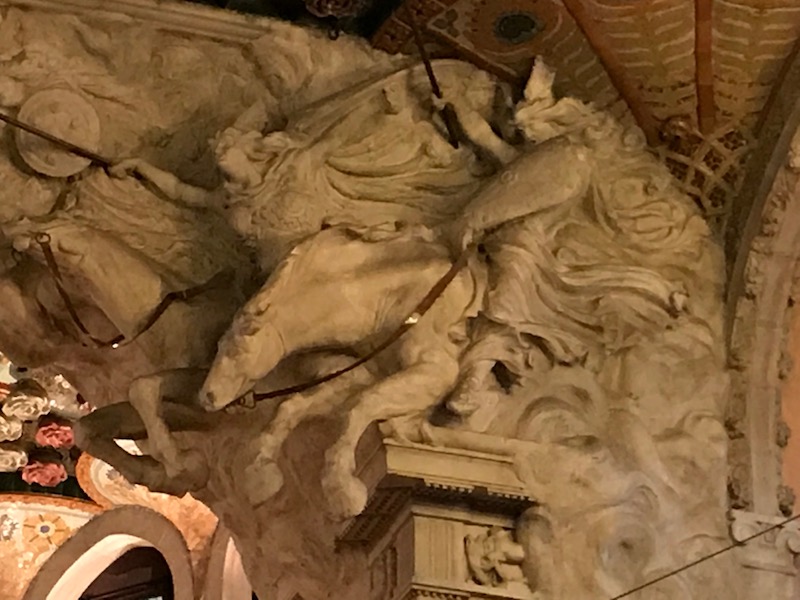

Along the back of the stage, in a semi-circle, are the figures of 18 young women popularly known as the muses (although there are only nine muses in Greek mythology). The upper bodies of the women protrude from the wall and are sculpture sby Eusebi Arnau. Their lower bodies, done by Lluís Bru, are colorful mosaics that form part of the wall. Each of the women is playing a different musical instrument, and each is wearing a different skirt, blouse, and headdress of elaborate design. You an not see all of the muses, since the only people who can actually see all 18 muses are the musicians on the stage.
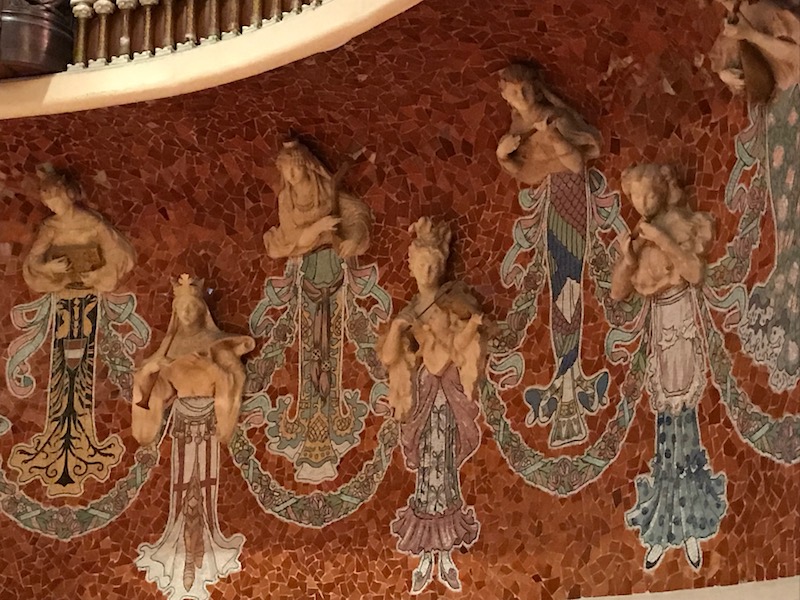
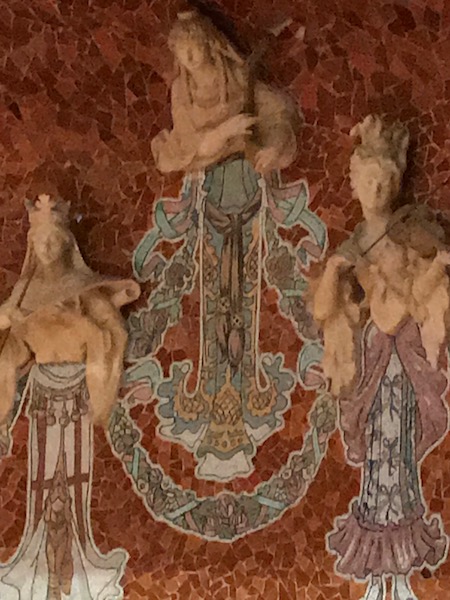

In the middle of the two sets of muses is this lovely blue decoration.
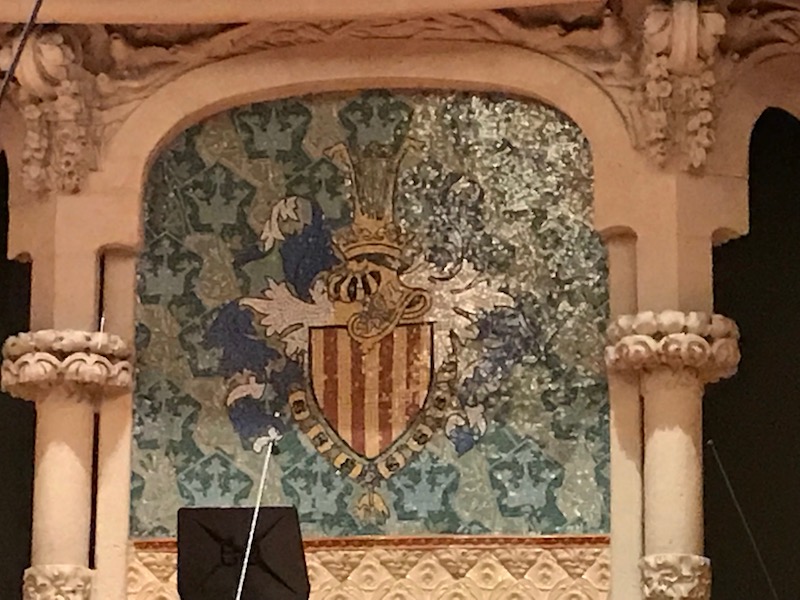
Over the stage is another window, letting in more natural life, along with additional colorful tiles and roses.

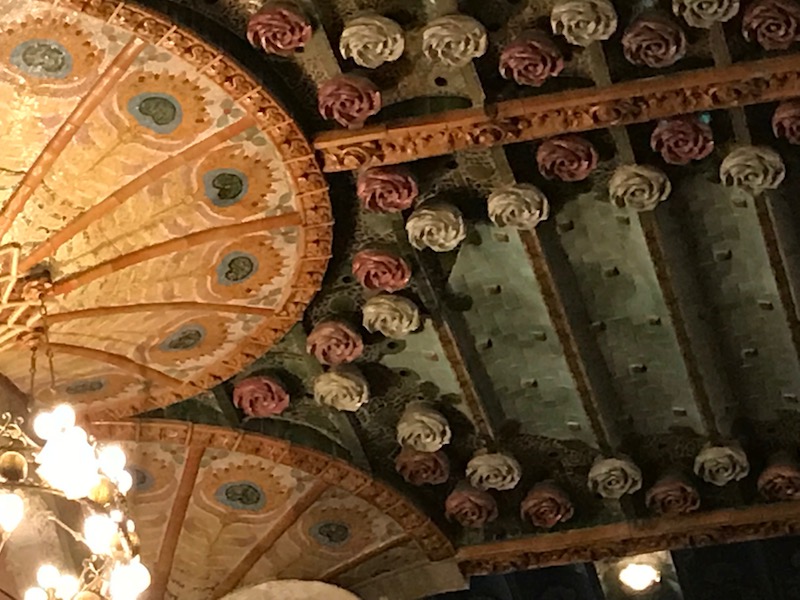
In the ceiling is an enormous skylight of stained glass designed by Antoni Rigalt whose centerpiece is an inverted dome in shades of gold surrounded by blue that suggests the sun and the sky. You can see how it is not just a flag skylight but instead, has the round sun coming down from the blue sky.


The stained glass have 2 main emblems .. this is Saint George, which is the patron saint of Barcelona. You will notice all of the roses everywhere ... those go back to the legend of Saint George slaying the dragon, and the dragon blood became roses. The common version of the story says that a venom-spewing dragon was living in a pond in Libya, poisoning the countryside. To prevent it from affecting the city of Silene, the people offered it gifts ... two sheep daily, then a man and a sheep, and finally their children and youths (chosen by drawing). Unfortunately, the king's daughter was drawn and the king offered all his gold and silver to have his daughter spared. The people refused and his daughter was sent out to the lake, dressed as a bride, to be fed to the dragon. At that time, Saint George happened to come by killed the dragon by beheading it. Depending on the story, he first captured it and had everyone in the city convert to Christianity before killing the dragon. But from the blood from the dragon grew a rose bush that had these deep red roses. Saint George is the patron saint of Barcelona and this is why you'll see the rose motifs all around.

